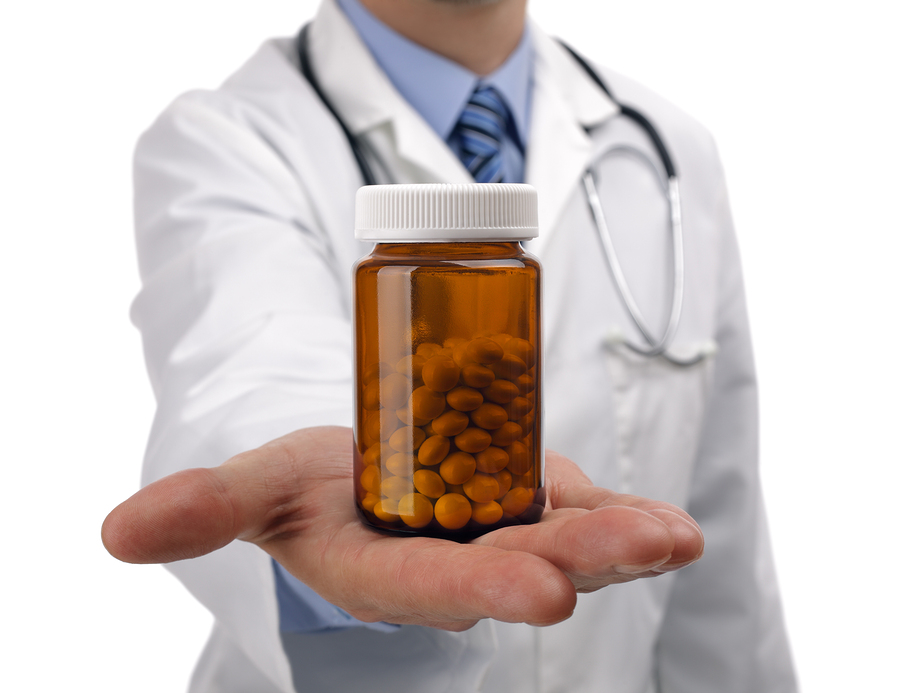The latest study of medicine prices finds U.S. insurers’ spending on expensive prescription drugs nearly quadrupled from 2003 through 2014, when the number of such prescriptions filled tripled.
 Spending on expensive “specialty” drugs by commercial insurance plans jumped from 11 percent of spending on all prescriptions filled in 2003 to 43 percent in 2014, according to the study, published Wednesday by the journal Health Affairs. Meanwhile, the number of prescriptions for specialty drugs rose from 0.6 percent of prescriptions filled in 2003 to 1.8 percent in 2014.
Spending on expensive “specialty” drugs by commercial insurance plans jumped from 11 percent of spending on all prescriptions filled in 2003 to 43 percent in 2014, according to the study, published Wednesday by the journal Health Affairs. Meanwhile, the number of prescriptions for specialty drugs rose from 0.6 percent of prescriptions filled in 2003 to 1.8 percent in 2014.
Researcher Stacie Dusetzina, an assistant professor of pharmacy and public health at the University of North Carolina-Chapel Hill, found patients’ out-of-pocket costs for pricey drugs climbed 46 percent over that period.
“This may be a foreshadowing for what’s next,” she said. “There’s a lot of new, very-high-priced treatments that are getting ready to emerge on the market. which would really increase spending.”
Prescription drug costs have spiked in the U.S. in the last decade, straining the budgets of insurers and state and federal health programs and becoming a hot issue in Congress and the presidential race.
Specialty drugs were once a small niche, generally injected drugs for cancer and complex chronic conditions that required refrigeration, extra oversight by nurses and preauthorization for insurance coverage.
That’s changed amid the surge of very pricey treatments – mostly pills – for hepatitis C, diabetes and other, not-so-rare conditions approved in recent years. Now the Centers for Medicare and Medicaid Services defines specialty drugs as those costing $600 or more per month, and many academic researchers and stock analysts use “specialty” as synonymous with very expensive.
Dusetzina examined trends in dispensing of and reimbursements paid for specialty drugs using a commercial prescription claims database maintained by consulting firm Truven Health. For each year in the study, she examined a random, 1 percent sample of the millions of claims processed for Truven’s clients, mainly large and medium-sized employers.
She compared total prescriptions filled through retail and mail order pharmacies with the number for which pharmacies were reimbursed $600 or more per month. Those included new hepatitis C pill Sovaldi, which cost Truven’s insurance plan clients $28,083 per month on average in 2014; older rheumatoid arthritis injections Humira and Enbrel, both costing more than $3,600 per month, and Gleevec, a 15-year-old pill for leukemia that averaged $10,893 per month in 2014, roughly four times its initial price.
The spending and usage spikes Dusetzina’s study show are similar to findings of recent studies by data firms and companies that manage prescription claims for insurers and employers. The rise is driven by annual double-digit price hikes for many drugs, drugmakers focusing on developing drugs for cancer and rare diseases that command prices of $100,000 or more per year, and millions of recently insured patients gaining prescription coverage.
“This is definitely aligned with what we’re seeing in the market and have for several years,” said Clare Krusing of the trade group America’s Health Insurance Plans.
Holly Campbell, spokeswoman for the trade group Pharmaceutical Research and Manufacturers of America, said in an email that medicines analyzed in the study
“include treatments for patients with conditions that previously had few or no options, such as cancer and multiple sclerosis.”
“Focusing on the list prices of these innovative treatments misrepresents the dynamics of the prescription medicine marketplace by ignoring the discounts and rebates negotiated by insurers and pharmacy benefit managers,” Campbell wrote.
Dusetzina said drugmakers don’t disclose amounts they give back to payers, such as after-the-fact rebates based on the volume of each drug an insurer has covered each month. However, the reimbursed prices in Truven’s database include some up-front discounts manufacturers give.
She said her findings may be on the low side, as the 1 percent of claims she examined may have missed some drugs for very rare conditions, which can cost hundreds of thousands of dollars annually.
Also, patients in individual or small-employer health plans often bear a higher percentage of costs than people covered by more-generous plans offered by bigger employers, Dusetzina said. She noted patients’ monthly out-of-pocket costs for specialty drugs increased from about $24 in 2003 to $35 in 2014, indicating their insurance plan was covering most of their cost.
Krusing, the insurers’ group spokeswoman, said many expensive new drugs now are launched at prices higher than what competing drugs cost, and makers of those drugs often raise prices in response, the opposite of how markets normally work. Those drugs will be protected by patents barring cheaper competition for 10 to 15 years, she said.
Was this article valuable?
Here are more articles you may enjoy.


 What The Return of California’s ‘Death Discount’ Means for Litigation
What The Return of California’s ‘Death Discount’ Means for Litigation  First Brands Judge Approves Examiner to Probe Fraud Allegations
First Brands Judge Approves Examiner to Probe Fraud Allegations  Palantir Poaching Suit Called ‘Scare’ Tactic by Ex-Employees
Palantir Poaching Suit Called ‘Scare’ Tactic by Ex-Employees  California Governor Seeks $200M to Replace EV Tax Credits Cut by Trump
California Governor Seeks $200M to Replace EV Tax Credits Cut by Trump 